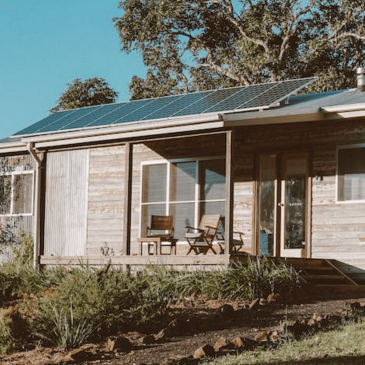How Should You Pay for Home Solar Panels This Year?
If price has been what’s keeping from enjoying all the benefits that come from owning a solar system, you’re not alone. But the great thing is that today there are several financing options that can help you overcome that hurdle by making solar more convenient and affordable. Along with manufacturer rebates and a substantial federal tax incentive, solar could even more affordable than you think.
In this guide, we’ll review some of the best ways to pay for residential solar in 2023. With so many different paths to affording solar, there’s sure to be a solution for everybody.
Using Cash for Solar Financing
While financing certainly has its advantages, paying for your solar system in cash remains the ideal solution if you can afford it. The primary reason, of course, is that by paying cash you won’t have to worry about paying interest on your purchase and this will help save you money over the long run. It also ensures that you will be eligible for any tax rebates and incentives that might be available.
But paying in cash also puts you on the fastest track to getting your solar panels installed. There’s no time wasted on applying and getting approved for loans. Your solar installer can start the job almost immediately, depending on their schedule.
That said, paying in cash is only worth it if you plan on staying in the home until you reach your break even point. Should you move before you break even and you choose to sell the home keeping the panels in place, then you will most likely wind up losing money on your solar panels. Or, should you move and take your solar panels with you, then you could find it harder to sell your home since the roof would then need to be repaired.
Solar Loans
Just like buying a car with an auto loan, you can purchase your solar system using a solar loan. These loans are designed for the sole purpose of financing solar installations. The main benefit of using a solar loan to pay for your solar energy system is that you can have the panels installed and start using them to power your home right away with little to no money down. As with any other type of loan, solar loans have monthly payment plans that break down the total cost of the system, so it is paid over a period with interest added.
Another benefit of using a solar loan is that it qualifies you to take advantage of tax rebates and incentives, just like you would if you had paid for your system in full using cash.
Cash-Out Refinance or HELOC
If you have equity in your home, then you have two options available to you that can help you pay for your solar system – a cash-out refinance or a home equity line of credit (HELOC). A cash-out refinance can work out well if you are also in the market to refinance your mortgage. This will allow you refinance your home at a lower interest rate and provide you with cash from the equity of your home to pay for your solar installation.
On the other hand, a home equity line of credit (HELOC) allows you to access the equity of your home without having to refinance your mortgage. A HELOC essentially works like a credit card. You finance your solar installation and pay the amount back over time with monthly payments. Once the used amount is fully paid, you can access it again whenever necessary.
As helpful as these products can be for paying for solar panels, they are best suited for you if you aren’t looking to get your system installed quickly since the approval process for each can be lengthy and time consuming.
Solar Leases and PPAs
For homeowners who don’t have enough cash or the resources to get approved for any of the other financing options listed above, solar leases and power purchase agreements (PPA) are available that can allow them to enjoy having clean sustainable energy in their homes at an affordable price point.
Solar leases work like auto leases in that a third party owns the equipment and you pay monthly for the right to use it. Most solar lease customers save between 10% and 30% of their current energy bill every month.
Of all the options listed here, solar leasing and PPAs are the least beneficial for several reasons. For starters, regardless of how long you pay your lease payment you will never own your solar panels. This means that should you sell your home, the new buyer will have to either accept the lease agreement or pay to have the equipment removed (and make any necessary repairs), and this can make selling your home more difficult. Plus, paying for solar via a lease or PPA does not qualify you for any tax rebates or incentives.
Renting Solar Panels
Tesla is the first company to offer solar equipment rentals, and this works very much like a solar lease. Like leasing, solar renting allows you to enjoy the benefits of clean energy immediately at a low monthly rate. But because you do not own the panels on your home, you won’t be able to get any tax advantages or rebates from them.
Which Solar Financing Option is Right for You?
Installing solar panels is a major home improvement project that can pay off huge dividends. As a result, it requires considerable research and some careful decision making. Before choosing your financing option, make sure you check their rates and read the fine print. Ask whatever questions you need to feel comfortable with your decision.
Choosing to go solar is always a great decision. But only if you can pay for it in a way that makes sense for your budget and needs. Before jumping in with both feet, work the numbers, take your time, and compare everything, and you will be much more likely to be fully satisfied with your choice.

